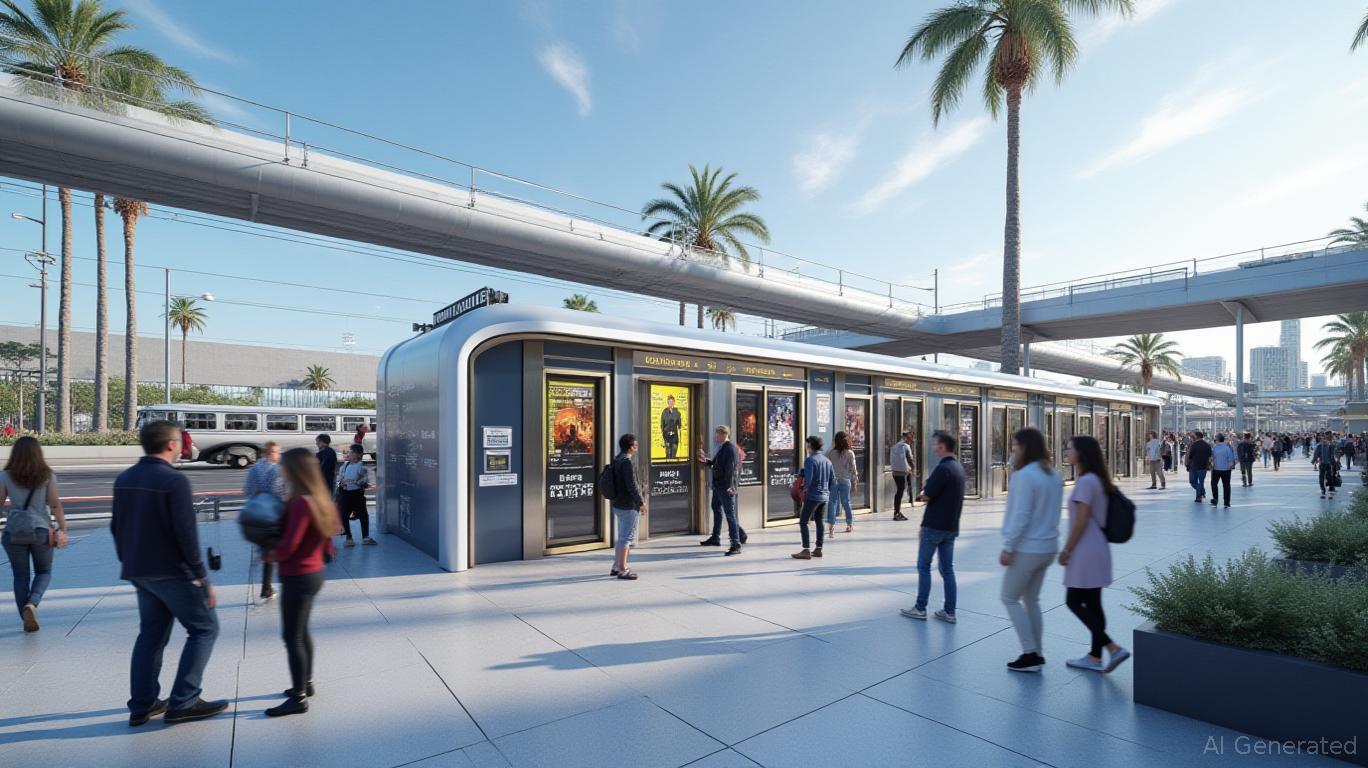Riding the Rails to Profit: How LAX's New Transit Hub is Transforming Real Estate Value
The Los Angeles Metro's LAX/Metro Transit Center, set to fully operationalize in 2025, marks a pivotal shift in Southern California's transportation landscape. As a gateway to the world's sixth-busiest airport and a key node for the upcoming 2026 FIFA World Cup and 2028 Summer Olympics, this transit hub is poised to redefine real estate value in its vicinity. For investors, this project represents a rare opportunity to capitalize on transit-oriented development (TOD)—a strategy proven to amplify property appreciation through improved accessibility and reduced car dependency. Here's why now is the time to act.

The Passenger Surge: A Catalyst for Economic Activity
The LAX/Metro Transit Center's projected 30 million annual passengers by 2026 (once the Automated People Mover, or APM, launches) signals a seismic shift in mobility patterns. The APM's design—capable of moving 6,000 passengers per hour during peak times—will slash vehicle miles traveled by 42 million annually, redirecting traffic from roads to rail. This reduction in car dependency creates a virtuous cycle: less congestion means more travelers will choose public transit, further boosting ridership.
But the impact isn't limited to the airport. The transit center's integration with the C and K rail lines and its 16-bay bus plaza transforms it into a regional mobility hub, connecting LAX to downtown LA, the Port of LA, and key sports venues like SoFi Stadium. Historical data supports this: when the Silver Line (LA's first dedicated bus rapid transit) opened in 2000, property values within a half-mile of its stations rose 22% faster than the city average over the next decade.
Why Retail and Commercial Properties Will Boom
Transit hubs are magnets for foot traffic, making them ideal for retail, offices, and hospitality. The LAX/Metro Transit Center's design includes over 1.1 million square feet of commercial space, primed to attract national retailers, restaurants, and co-working spaces. The demand for convenience—think 24/7 access, reduced parking hassles, and seamless transfers—is already driving interest from developers.
Take the Silver Line example again: office vacancy rates near its stations dropped by 15% within five years of its launch, while rents increased by 30%. Similarly, the transit center's proximity to the Consolidated Rent-A-Car (ConRAC) facility—which eliminates 3,200 daily shuttle trips—will free up land for mixed-use development.
How to Invest: Low-Risk Vehicles for High Returns
For investors seeking exposure to this trend without the risks of direct real estate ownership, two options stand out:
Transit-Oriented Development (TOD) REITs
REITs like Equity Residential (EQR) or Boston Properties (BXP) often focus on urban, transit-connected assets. Look for portfolios with exposure to LA's Wilshire corridor or the Crenshaw District. A visual analysis of EQR's occupancy rates near transit hubs could highlight its resilience during economic downturns.LA Metro-Backed Municipal Bonds
Bonds funding the LAX Transit Center or the APM project offer tax-free yields and low default risk. The City of Los Angeles GO Bonds (LACO), for instance, typically carry AA+ ratings and align with long-term infrastructure growth.
Risks and Timing Considerations
While delays have pushed the APM's launch to 2026, the transit center's June 2025 opening means investors can start capitalizing on early-stage opportunities. The 24-month ridership growth Metro has achieved since 2022—surpassing one million daily boardings in September 2024—suggests momentum is already in motion.
However, caution is advised for short-term speculators. The full value uplift will materialize only after the APM's 2026 rollout. For patient investors, this is a buy-and-hold scenario, with payoffs accelerating through the 2028 Olympics.
Conclusion: A Blueprint for Smart Infrastructure Investing
The LAX/Metro Transit Center isn't just a station—it's a catalyst for urban reinvention. With 30 million annual passengers projected and a proven track record of transit-driven real estate growth, this project offers a textbook case for capitalizing on infrastructure investment. Whether through TOD REITs, municipal bonds, or direct property purchases, investors can position themselves to profit from one of LA's most transformative projects.
The train is leaving the station—board now before the tracks fill up.
Data Note: For real-time metrics, analyze LAX traffic patterns via LAX Airport Authority reports, or track LA Metro ridership trends through LA County's open data portal.

Comments
No comments yet